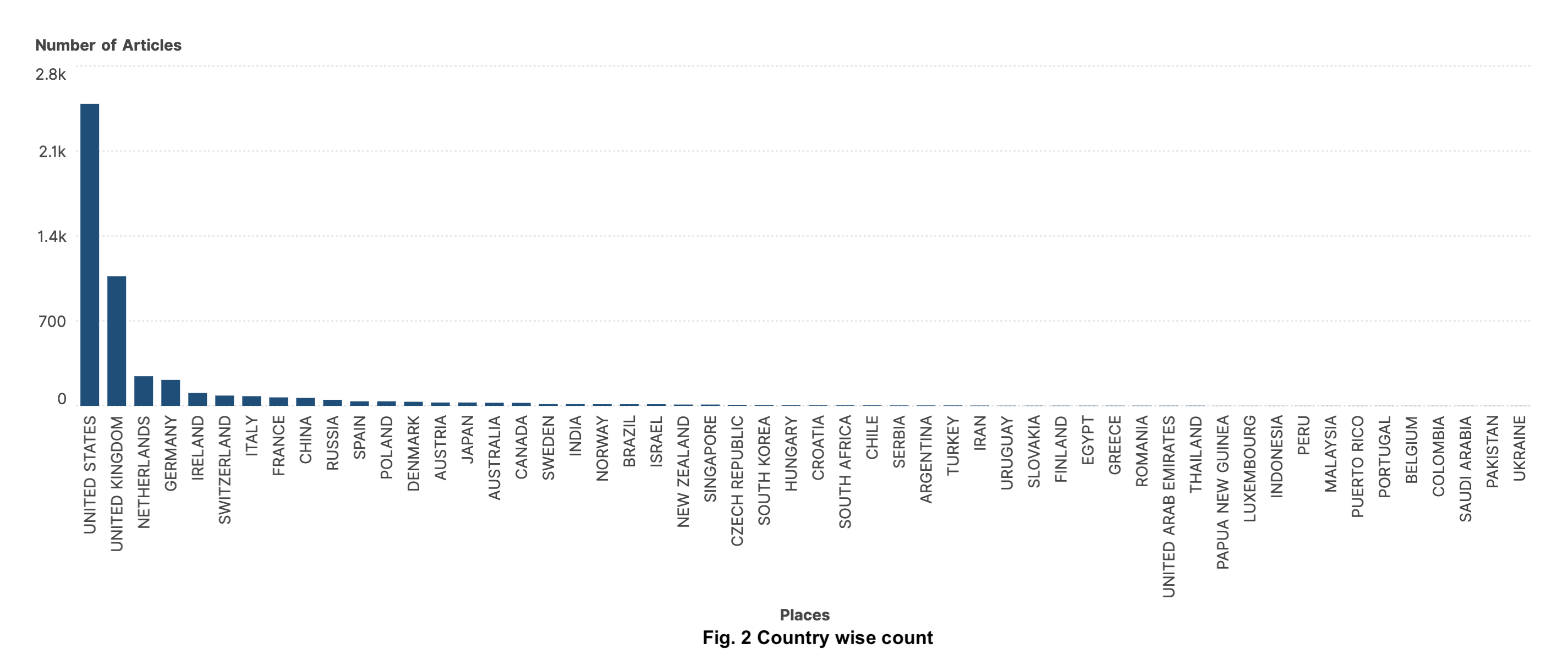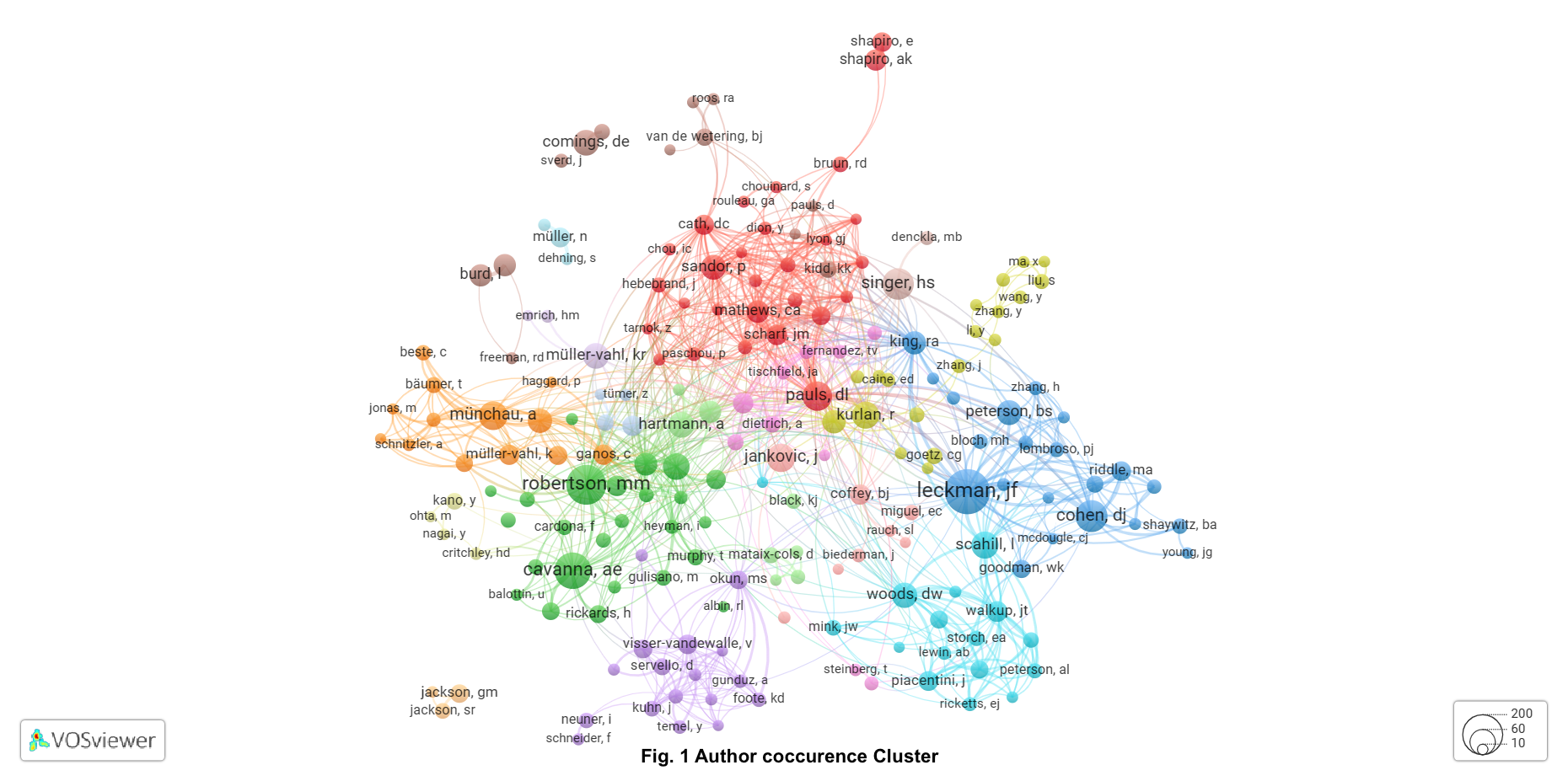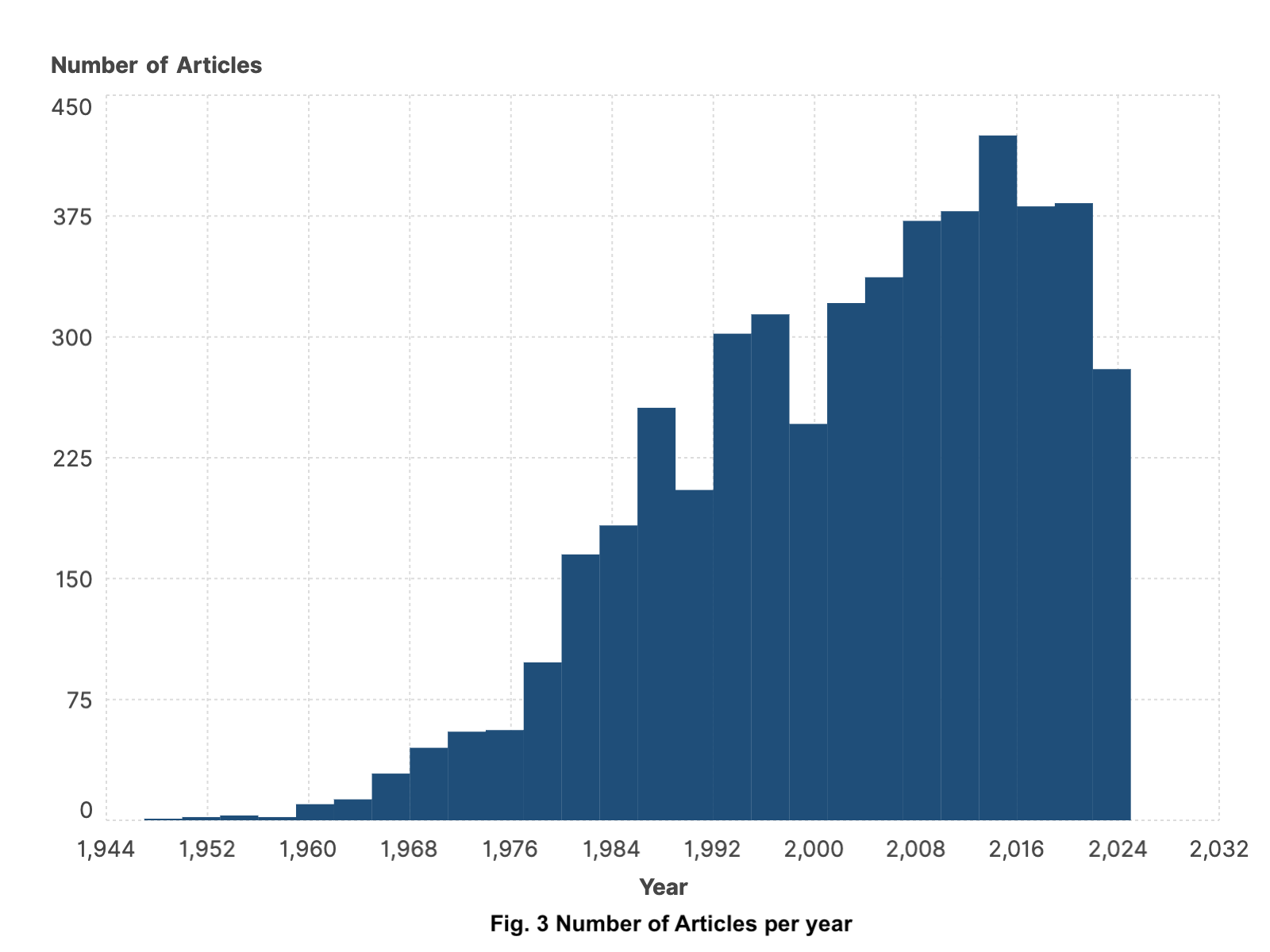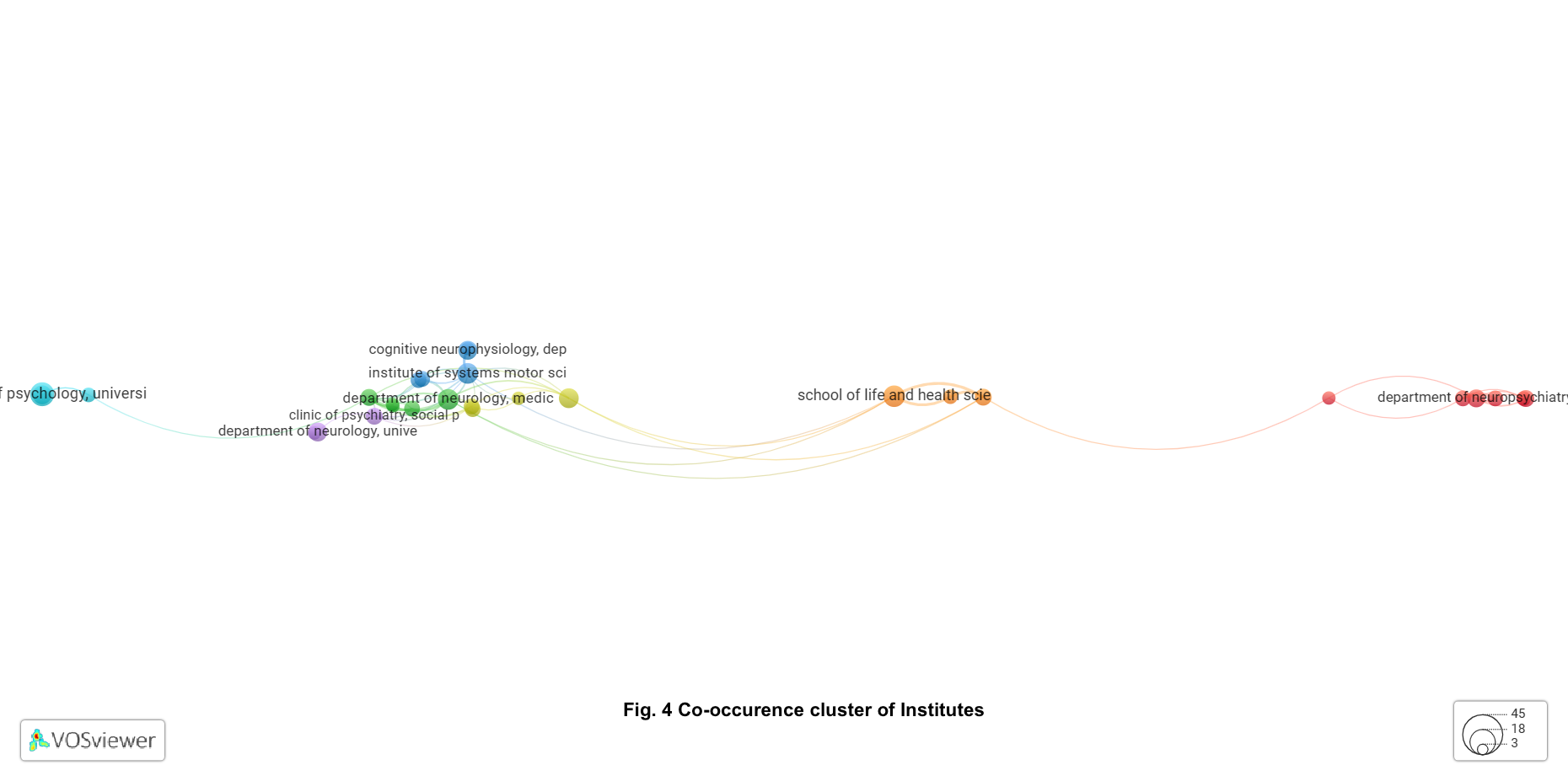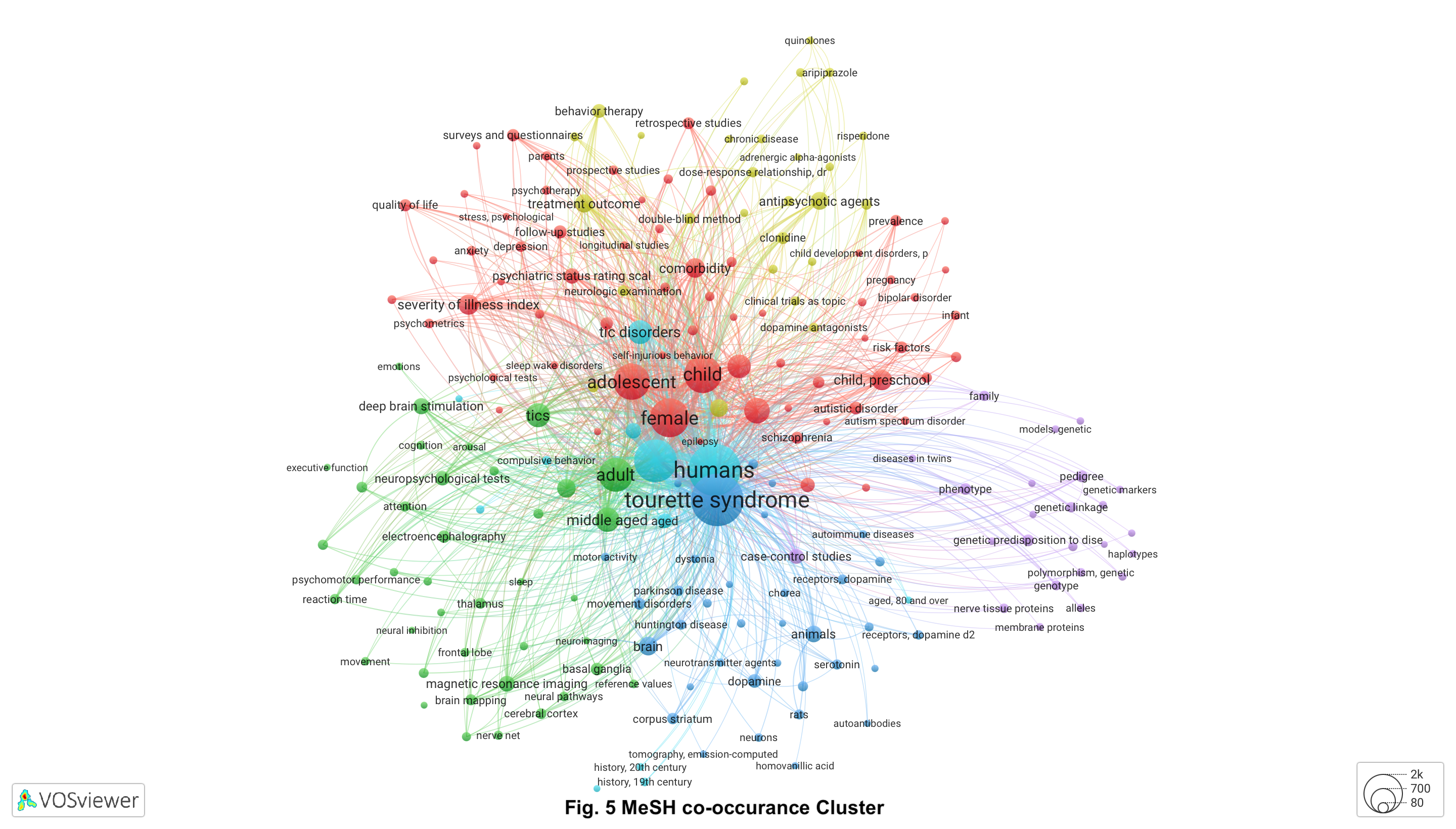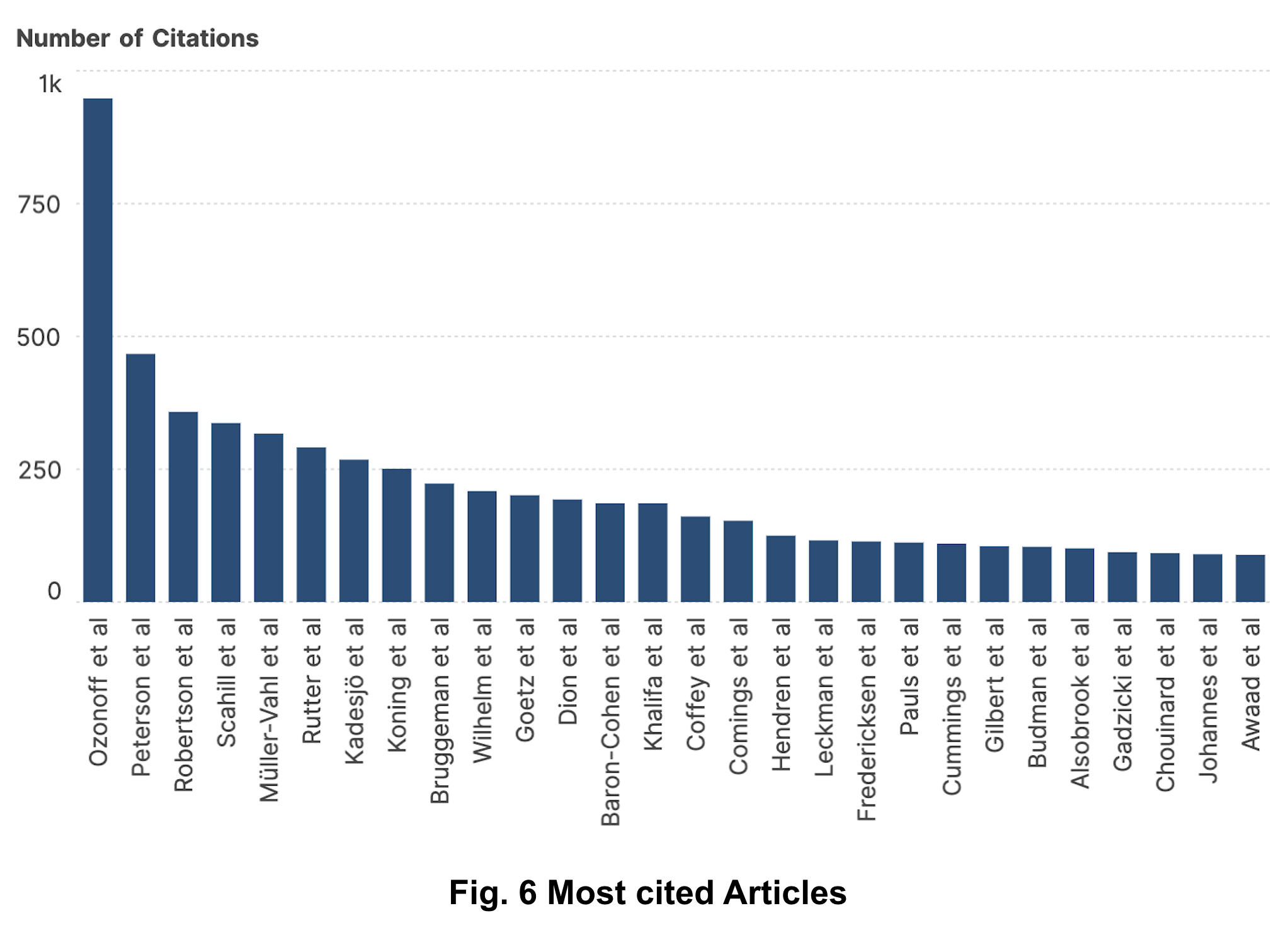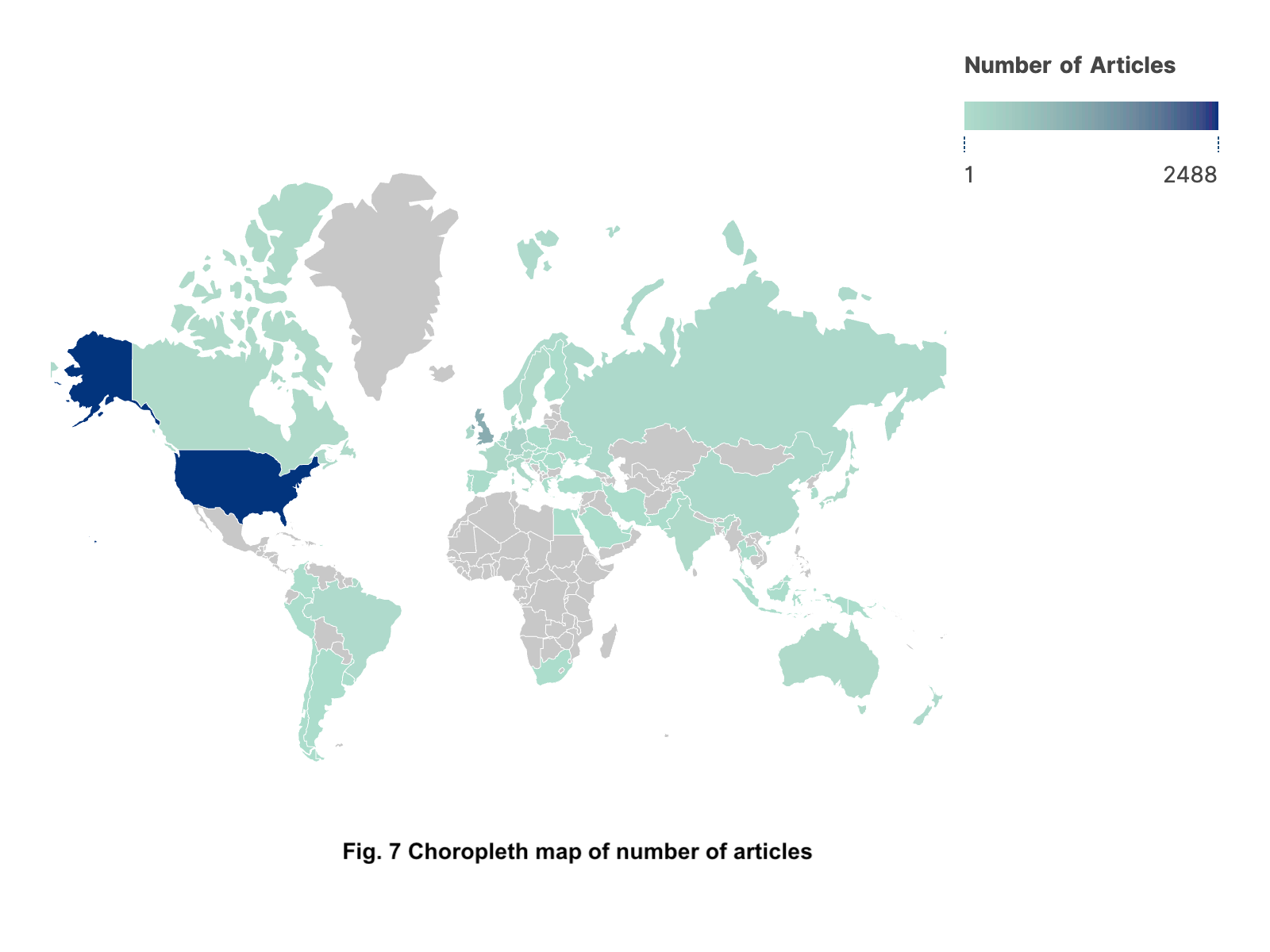Category: Tics/Stereotypies
Objective: To analyse Tourette Syndrome research trends, methodologies, and key findings to identify focus areas and guide future investigations in understanding and treating this complex neurodevelopmental disorder.
Background: Tourette syndrome (TS) is a complicated neurodevelopmental illness defined by recurrent, involuntary movements and vocalizations known as tics. A growing body of research publications has attempted to clarify the aetiology, symptomatology, and available treatments for TS. In order to provide light on the current level of knowledge and research trends in this area, this abstract analyzes a number of research publications that are TS-focused.
Method: A comprehensive bibliometric analysis was conducted on all Tourette syndrome related publications available on PubMed. A search for the MeSH term ‘Tourette syndrome’ was conducted using PubMed. VOSviewer was used to visualise the data, allowing for the investigation of trends and patterns. The data were extracted regarding study design, methodologies utilised, key findings, and other pertinent parameters. Data regarding the number of citations was extracted from citationchaser.org.
Results: In the research landscape, the United States of America, has the highest number of papers published. The Movement disorders : Official journal of the movement disorder society: 181 has the highest number of studies mostly in English. A total of 903 case reports,161 randomised control trials,73 systematic reviews and were present on the topic. The notable authors with the most articles are Robertson MM and Leckman JF.
Analysis of MeSH terms associated with neurological conditions reveals a demographic skew towards males and a broad age distribution. Studies frequently employ brain structure examination and diagnostic techniques like MRI and EEG. Non-pharmacological approaches, including deep brain stimulation and behaviour therapy, are explored alongside pharmacological treatments. Connections with psychiatric disorders such as OCD and ADHD are noted, emphasising the multifaceted nature of research in this field.
Conclusion: This analysis offers an overview of research pertaining to Tourette Syndrome, spotlighting key areas of focus, trends in methodology, and potential directions for future research. By compiling and analysing varied studies, it sheds light on the current hot topics within the field.
Citations per country
Author Co-occurence Cluster
Year wise number of published articles
Institute co-occurence cluster
MeSH terms co-occurence cluster
Most Cited articles
Choropleth map
To cite this abstract in AMA style:
A. Subhedar, T. Lalotra, S. Khankar, S. Joshi, S. Mast, A. Bhonsale. Mapping the Landscape of Tourette Syndrome Research: A Bibliometric Analysis [abstract]. Mov Disord. 2024; 39 (suppl 1). https://www.mdsabstracts.org/abstract/mapping-the-landscape-of-tourette-syndrome-research-a-bibliometric-analysis/. Accessed April 1, 2025.« Back to 2024 International Congress
MDS Abstracts - https://www.mdsabstracts.org/abstract/mapping-the-landscape-of-tourette-syndrome-research-a-bibliometric-analysis/

